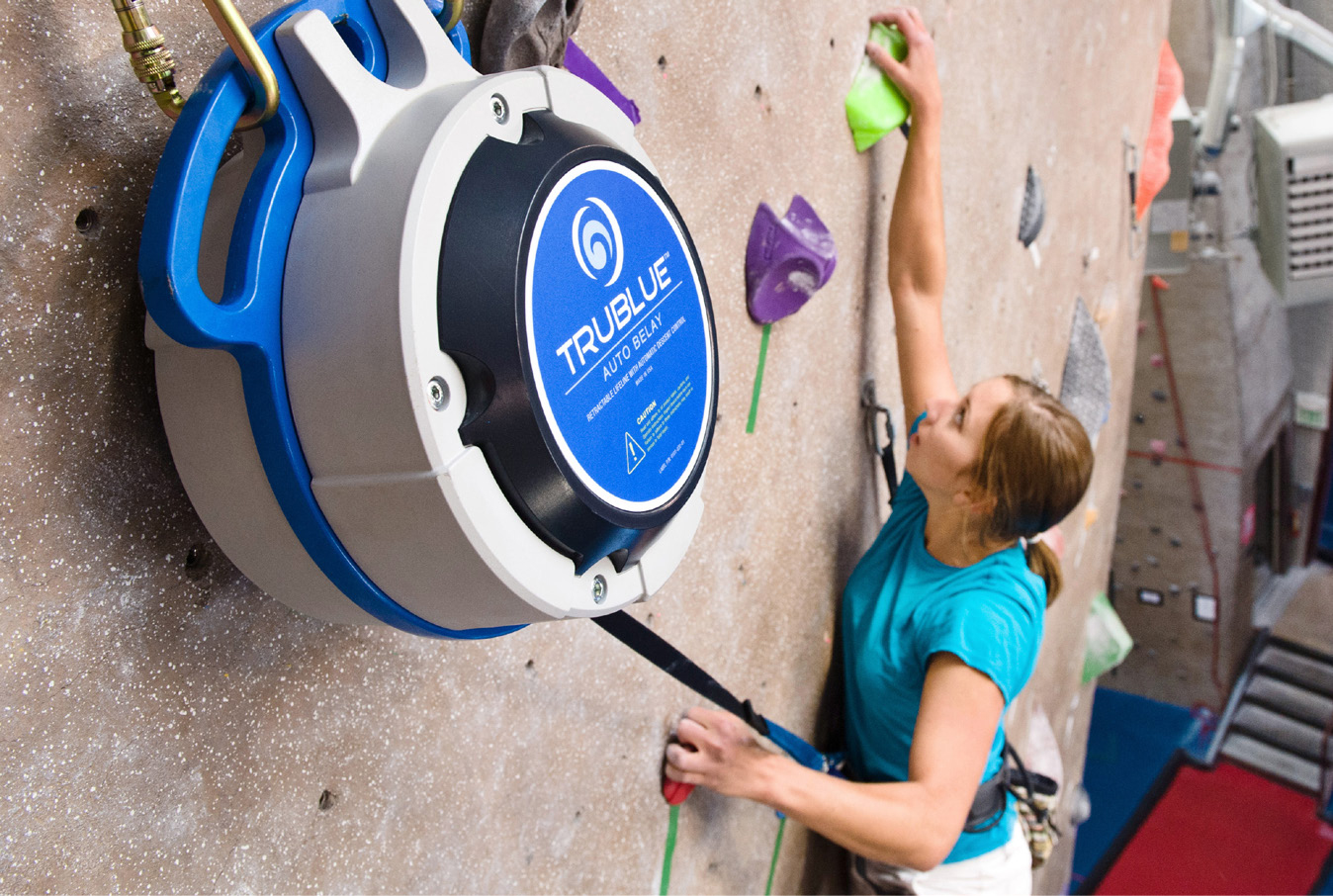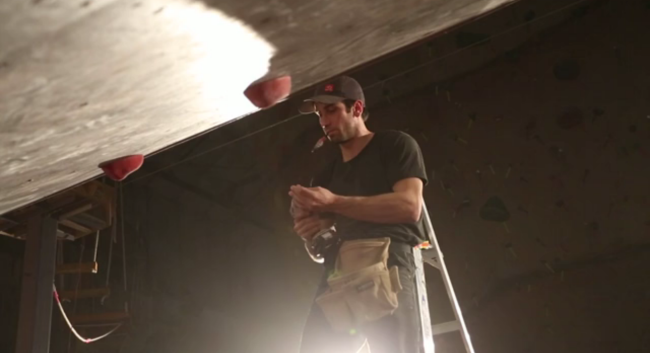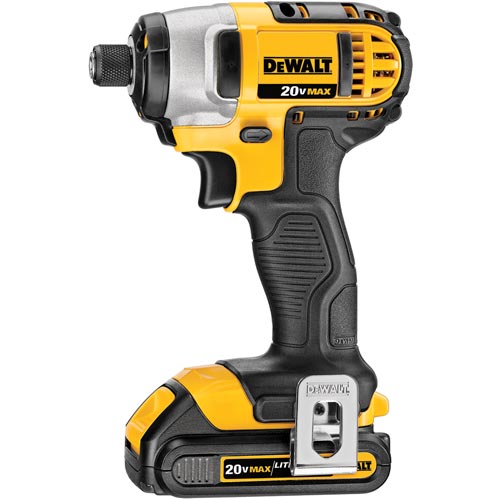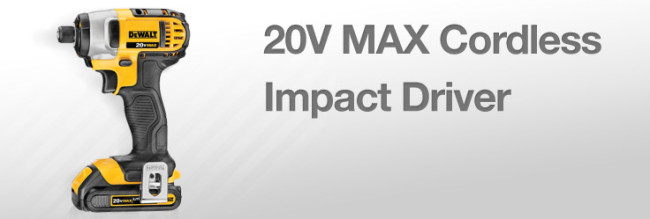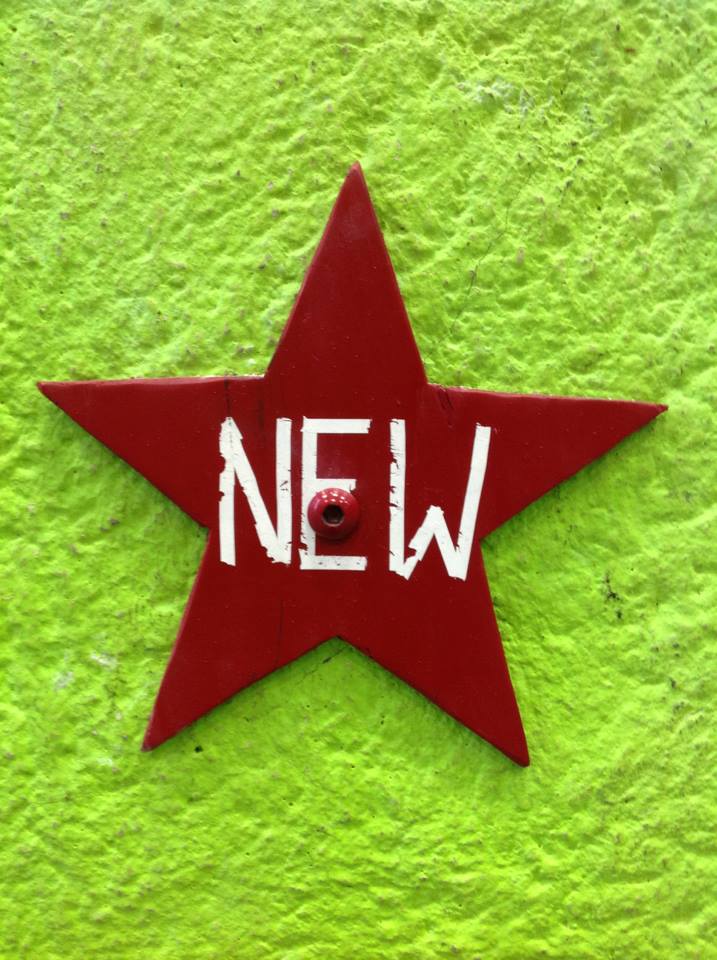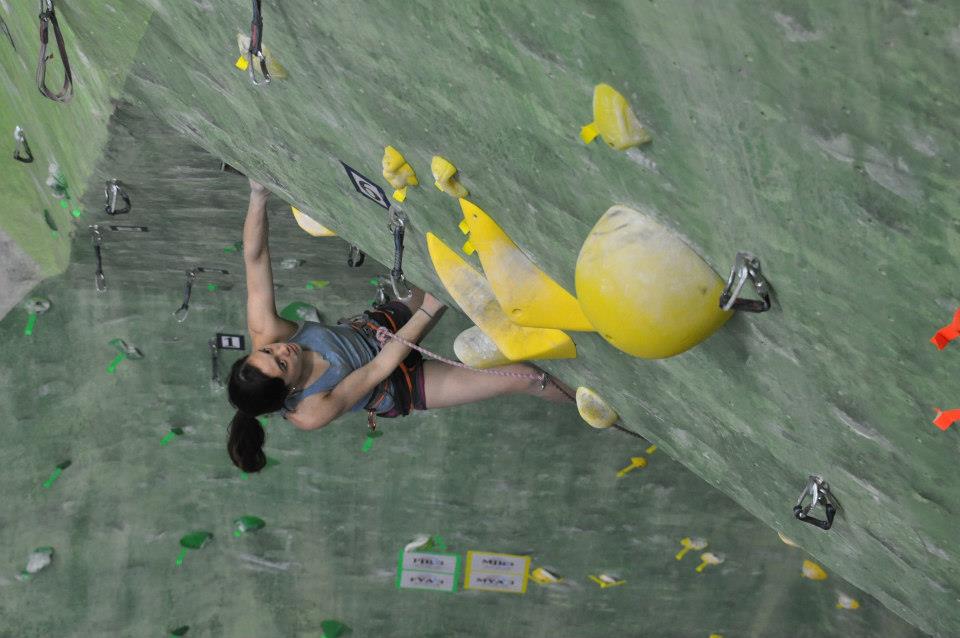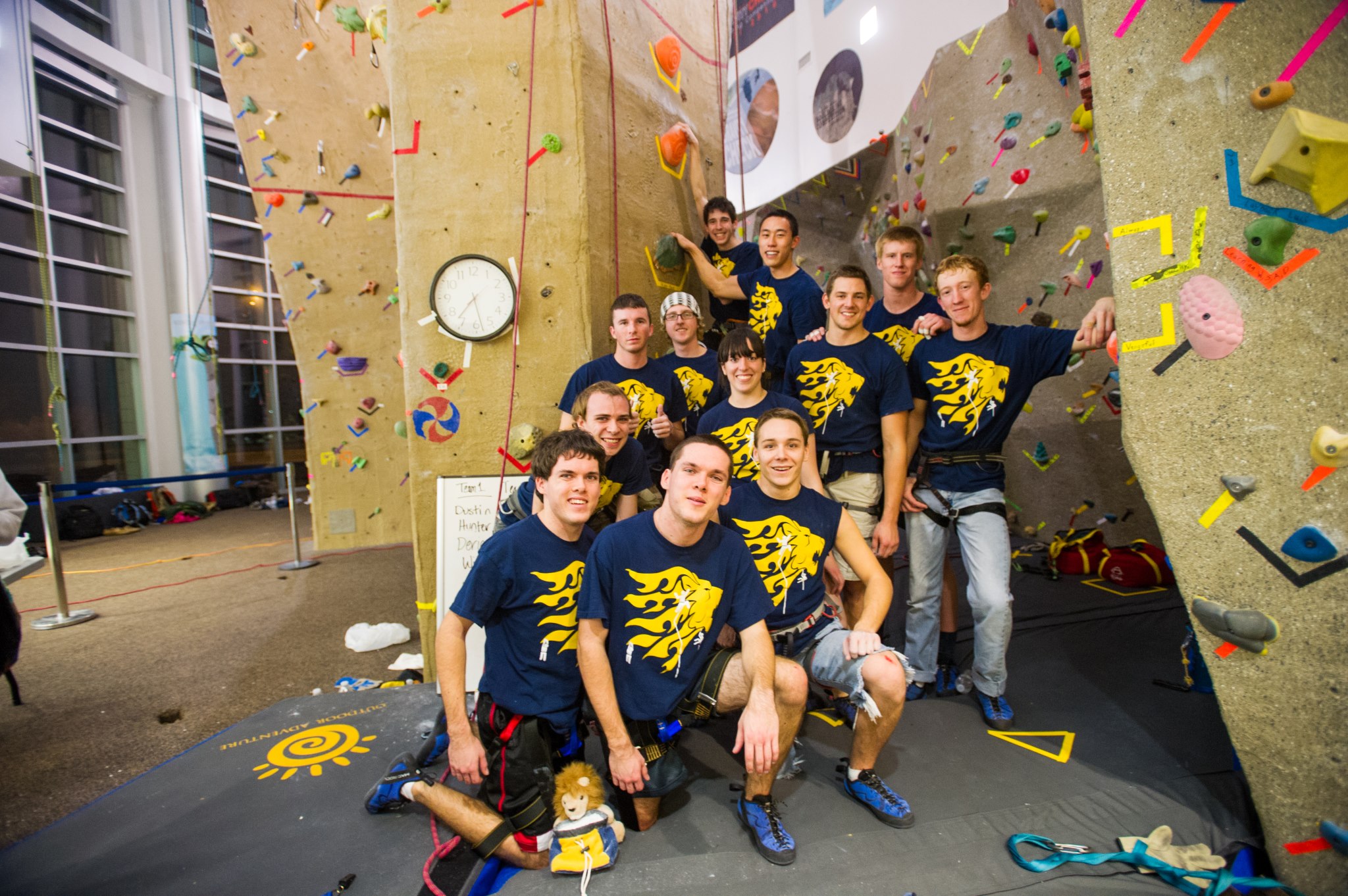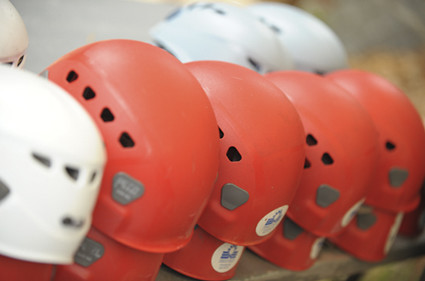http://taiwanrocks.net/new-taichung-bouldering-gym-being-built/
Trublue Changes Name and CEO
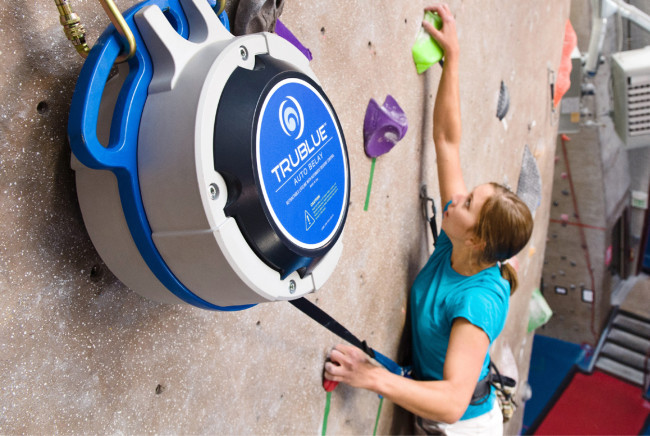
The company that makes and sells America’s most widely used auto belay system is changing their name. Trublue LLC, the designer and seller of the popular Trublue Auto Belay, is changing its company name to Head Rush Technologies.
According to the company the name change reflects its growing breadth and depth of products, which includes climbing auto belay devices, zipline equipment and climbing holds under their Franklin Handholds brand. Its sister company, Eldorado Wall Company, will continue to manufacture climbing wall products under the Eldorado brand.
Also in store for the company is a change in leadership, with Candie Fisher taking over the role of CEO. Fisher has been with the company since its inception in 2009, when the company launched the Trublue Auto Belay. She was most recently the company’s Vice President of Marketing and was responsible for sales, marketing and distribution.
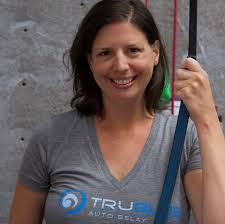
“Candie has demonstrated tremendous leadership skills and an interest in all facets of our business. Candie is not only capable, but driven and extremely motivated to help Head Rush Technologies reach its potential,” said Mr. McGowan, Trublue’s Founder and President. McGowan will remain involved in the company and will continue to drive its product development initiatives.
“I am thrilled to be taking on an expanded leadership role with Head Rush Technologies,” said Fisher. “My co-workers and I are poised to continue the growth of our company as the leading innovator of adventure equipment.”
Head Rush Technologies plans to release several new products through the end of 2013 and early 2014, including the TRUBLUE XL Long Line Auto Belay and the quickJump Free Fall Device.
Metro Rock’s New Head Setter
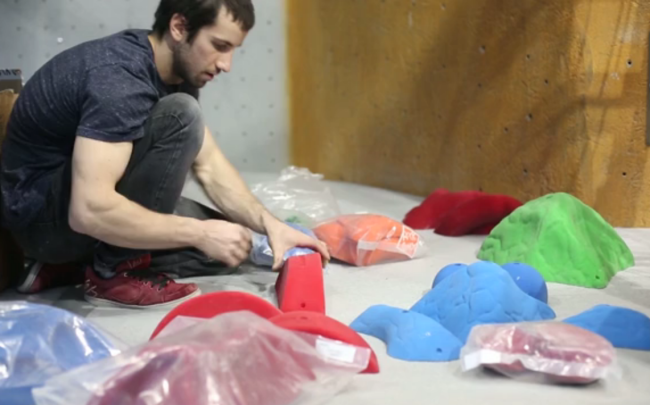
Dave Wetmore is the real deal. After routesetting for 14 years, creating and operating the best unsanctioned competition series in the country and sending V14 (Big Worm), he has now signed on to be MetroRock‘s full-time Head Routesetter.
MetroRock is a venerable climbing gym with two locations in the Boston area and a third opening in Burlington, Vermont in the spring of 2015. Setting for such a company is a milestone for any setter, but 27 year old Wetmore is no ordinary routesetter. He knows how to let’er rip and get things done.
He, along with fellow MetroRock routesetter Josh Larson created the Dark Horse bouldering series which is known for its flashy and uber-creative boulder problems and has quickly become a stop for any pro climber trying to make his or her mark on the comp scene.
Wetmore also took it upon himself to become a USA Climbing Level 4 National Routesetter. He now regularly sets for SCS Youth National Championships and has set for the Outdoor Retailer tradeshow comps.
The Climbing Business Journal sat down with Wetmore to find out whats next for MetroRock’s newest Head Routesetter.
You left routesetting for awhile and traveled to Colorado to climb. How did that trip factor into you becoming the head setter?
Well, living like a haggard wolf-beast for a full year, throughout Colorado, the Southeast, and New Hampshire, put things in perspective for me. I am not strong enough or good enough to be a professional climber (a climber that gets paid enough to make a living solely through climbing). And while I managed to climb many boulders at my limit and had a great time living that lifestyle, being lonely and on the road and poor all the time isn’t that cool — the end does not justify the means — at least for me. So, I decided I wanted to grow up and make a living. Maybe even buy a house and have a small pumpkin patch in the back with a golden retriever that would eat squirrels. What? Anyway, route setting has always been there for me and has provided the most creative and passionate outlet that I could ever want. Now it’s what I do full-time and probably will do for the rest of my life.
WHAT WILL BE YOUR BIGGEST CHALLENGE AS HEAD SETTER?
I’m a sensitive dude. I have tender feelings! People are not always going to want to do things the way I want to do things, so I’m going to have to try and find a balance between being the boss and allowing other setters to do their thing without me being a grumpy, little baby about it. Basically, learning how to work with all different personalities during the tweaking process is something I think I could spend the rest of my career improving on. More importantly, we have about 10 paid setters now between the North and South gyms. Organizing their time in the most efficient way possible in order to optimize our turnover rate is something I’ve never had to deal with because I’ve also just been screwing holds to the wall. I’m psyched for the new challenges.
WILL YOU BE SETTING AT ALL THE METROROCK LOCATIONS?
Yes. I, along with our solid crew, put up and take down many holds in the course of a work week. When our third gym comes online in Burlington, Vermont, I’ll make the 3-hour drive up north once a month and stay for a week to set whatever needs to get set.
WHAT IS YOUR WORK LOAD? ARE YOU ONLY SETTING OR COACHING TOO?
I don’t coach anymore at all due to time constraints and because my heart just isn’t in coaching anymore—it’s fully in setting. Work load consists of setting, managing and organizing setting teams, coordinating our competition and event schedule, keeping our hold selection and budget updated, wall maintenance, and anything else that falls under the big picture of overall gym improvement. At the end of the day, my main goal is to help our team set the very best routes and boulders that we possibly can by collaborating, supporting, and instructing on a daily basis.
WILL YOU STILL BE ABLE TO SET FOR NATIONAL CHAMPIONSHIP EVENTS?
Absolutely. Professional growth and development is a huge priority for myself. Thankfully, MetroRock has always allowed me to pursue my goals within USA Climbing, and other major events, while maintaining my responsibilities at our gyms.
BOSTON IS QUICKLY BECOMING ONE OF THE MOST COMPETITIVE GYM MARKETS IN THE COUNTRY. HOW IS METROROCK RESPONDING TO THIS INCREASED PRESSURE?
We are not the flashiest, prettiest, or cutest gym on the market anymore. We have battle scars and wounds. Our walls have aged. But I believe our setting is among some of the best in the country and will continue to be as we develop honed setting teams across all gyms. Our setting will undoubtedly differentiate us from our competition for years to come. And as gyms evolve in design and layout, so too will ours as we construct and deconstruct the insides of our buildings.
HOW WILL YOU KEEP METROROCK’S WALLS FRESH AND INTERESTING FOR YOUR MEMBERS?
This is not easy. We have a very “old school” flavor to our gyms. Recently, we have re-paneled the entire inside of our biggest boulder in Everett and replaced all the T-nuts to make it easier for our setters to be creative. Outside of painting the walls a more welcoming and brighter color, we are in the process of constructing a 20-by-20 foot glass-paneled door/window that we can open and close. Air! Light! These kinds of improvements help us change our building from the old World War II tank construction bay that it once was and into a happier, brighter, and overall better space to climb. In addition, we are currently looking into manufacturing our own volumes for our gyms, so that we can create a large quantity for cheap, similar to what Tonde has already done at Seattle Bouldering Project. A volume, as you know, can completely transform any old angle.
HOW WILL BEING HEAD SETTER EFFECT THE DARK HORSE COMPETITIONS?
I think that as the Director of Setting for the MetroRock gyms, I’ll learn a lot about what it really means to manage. Although I’ve managed crews for the past 5 seasons of Dark Horse, I’m hoping that I can improve as a leader as I learn how to balance more responsibility. We have an amazing staff and team of setters. They make my job easy.
WHAT ADVICE WOULD YOU GIVE TO SOMEONE THAT WANTS TO TURN SETTING INTO A CAREER?
Try, try, and try again. I started out as a volunteer setter back in 2004 for MetroRock—that’s over a decade ago if my math is right. Eventually, I moved up from getting paid nothing to getting paid $25 per route. It’s crazy how far you can go in this industry if you’re willing to listen, be patient, and work hard because you love it. Luckily, as this industry grows due to the number of gyms popping up all over the country, gym owners will need more and more certified and legitimate route setters to maintain a standard of quality that the consumer will inevitably demand. This just means more opportunity for us. It’s a great thing.
IS METROROCK TAKING CARE OF YOU FINICALLY?
Yes. It’s taken me over a decade of grinding to reach a level of financial security (yearly salary, health insurance, paid vacation, etc), but I feel very well taken care of at this point and hope that other setters across the country can be given similar opportunities as our industry continues to grow and becomes more competitive each year.
HOW IMPORTANT WAS IT FOR YOU GET A LEVEL 4 USAC SETTING CERTIFICATION? DID THE GYM REQUIRE YOU TO HAVE IT?
Honestly, my gym didn’t even know such a certification existed until I got it. So, no, my gym didn’t require it. However, the knowledge, experience, and group work skills that I have gained over the years within USAC is certainly reflected in our work at MetroRock on a day-to-day basis regardless of whether or not a gym owner or boss deems it necessary to be certified.
DID YOU HAVE ANY MENTORS WHILE YOU WERE COMING UP AS A YOUNG SETTER? WHO HELPED YOU BECOME THE SETTER YOU ARE TODAY?
Jason Danforth and Pete Ward used to put on these crazy bouldering comps in New Jersey back in the day. Their style has greatly influenced mine. But people like Mike Helt, Chris Danielson, and Kynan Waggoner, have helped me develop into a professional. Working in big crews at USAC National events under dialed Chiefs, as well as their periodic clinics that are provided throughout the year, has significantly added to my base of setting and communication skills that I use on a day-to-day basis. You’ve got to repeatedly get knocked down to build yourself back up in a better way—just like how a crappy route or boulder grows into an undeniably solid series of moves after it gets destroyed and re-birthed. That’s how I’ve grown as a setter over the years.
World’s First Underwater Gym

Brooklyn Boulders will become the world’s first climbing gym to operate underwater. The gym will be built under Pier 57 which is a long-abandoned former shipping and passenger terminal that spans about a half-million square feet at West 15th Street in the meatpacking district in Manhattan, New York.
Brooklyn Boulders which operates gyms in Brooklyn, New York and Boston, Massachusetts is one of three lead tenants for the $200 million project which includes a beach club to be operated by prominent hotelier Andre Balazs, and fashion retailer Opening Ceremony.
The new climbing gym will take up about 20,000 square feet in the airtight concrete caissons that support the pier and provide occupiable space below water.
The New York Times is reporting that developer, Youngwoo & Associates, has rebranded Pier 57 the SuperPier, a term used in a 1952 article in Popular Mechanics magazine that detailed its construction. After the original Pier 57 was destroyed by a fire in 1947, it was rebuilt as a shipping and passenger terminal for the Grace Line. The builders eschewed the wooden piles that supported most piers, and instead used three caissons, enormous concrete boxes. The hollow boxes were poured in a diked basin upstate, then towed, floating, down the Hudson River to the pier site.
The boxes now form the pier’s basement, which Youngwoo has leased to the company Brooklyn Boulders for a climbing gym.
“The space down there is really cool — it is cold year round and you can feel that you are underwater,” said Lance Pinn, a co-founder of Brooklyn Boulders.
The company is also in talks to build an ice-climbing wall outside. “So not only will we be the only underwater climbing gym in the world and the only fully dedicated climbing gym in Manhattan, but we could have the only ice-climbing wall in a major American city,” Mr. Pinn said. The project will be completed by 2015.
Mr. Pinn’s only competition in New York is Chelsea Piers, a large upscale athletic club with 11,000 square feet of climbing which is located at Pier 60, a tenth of a mile from the new SuperPier.
CrainsNewYork.com is reporting:
Andre Balazs, developer and operator of the hugely successful nightlife High-Line area venue and hotel the Standard, will install a roughly 30,000 square foot facility on the building’s second floor that will house a pool, spa and outdoor terrace.
Opening Ceremony meanwhile will have a series of shops installed in modified shipping containers, the first of what Youngwoo & Associates is planning will be an array of tenants who use the containers or “Incuboxes” as space for their stores. Opening Ceremony, which operates a shop in Soho, is setting up a temporary 16,000 square foot space at the pier for Fashion Week from September 5-12. According to sources, its permanent store will be of similar size.
The waterside complex, which is undergoing a gut renovation by Youngwoo costing millions of dollars, will be ready for permanent occupancy by 2015 the company said.
The deals are not yet signed but the tenants have all signed letters of intent and are expected to complete the transactions in the coming months.
The roof of the two-story pier will be an open public space that will be used for film screenings during the Tribeca Film Festival.
Youngwoo & Associates has spent months since it won approval to redevelop the pier in April bringing the long-forgotten property back into the public’s consciousness. During the summer, it installed several food tenants in the space to draw from the 18 million or so yearly visitors that pass by the pier along the adjacent Hudson River Park that spans the waterfront on the West Side.
DeWalt Impact Review
The DeWalt 20 volt impact driver has quickly become the go-to tool for professional routesetters. On the National setting circuit there are so many DeWalt impacts around that one might think the crew is sponsored by DeWalt (sadly, not true). National Chief Routesetters Chris Danielson, Mike Helt and Jeremy Hardin all use the DeWalt.
In fact Jeremy Hardin, who may be the most efficient setter in the country — he has the distinction of setting the fastest World Cup boulder problem in American history with a time of 25 minutes — uses one every day in his role as Head Setter of Sport Rock Climbing Centers in Virginia.
Hardin says, “I use it everyday, stripping and setting about 200 feet per day, usually all on one charged battery. That’s either 20 routes per week or 75 boulder problems.”
Key Features
The 20 volt DeWalt impact comes in at only 2.8 pounds but delivers an impressive 125 ft-lbs of torque. The machine speeds along at 2800 RPM which translates to about 1 – 2 seconds per hold attachment. If you use it for stripping alone it would be worth the cost.
The DeWalt cordless impacts are available in 12v, 18v and 20v. The 12 volt is plenty strong for light duty setting (once a week or less). Though pushing numerous set screws through the wall will quickly tire the little guy out. The ergonomics of the entire line is superb, well balanced and perfect for work at height. The 18 and 20 volt feel and perform basically the same, so for your best value go for the 20 volt.
One of the best features of the impact is the ability to plug in a 1/4″ hex bit with one hand; there is no need to pull back the quick connect coupling before inserting the bit. With this feature it is safer to change bits on a ladder and should result in fewer drops from height.
The battery capacity on the DeWalt is as good or better than other impacts popular with setters (e.g. Makita, Hitachi). A 30 minute charge will completely refresh the battery allowing for no down time. The 20 volt battery comes with an on-board charge indicator which allows for the routesetter to determine how much juice is left before jugging all the way to the top of the wall.
We would be remiss if we failed to mention the 3 LED lights that surround the driver, allowing for a clearer view of the t-nut. This feature is great for those dark corners and making sure the bolt is going in straight. It’s also good for late night disco parties! The 12 volt’s lighting is better than the 20 volt but who cares, we don’t set in the dark anyway.
From myfixituplife.com:
“The tool’s adjustable power settings are something I never thought I’d like as much as I do. While an impact driver typically delivers ground-poundin’ power and see-ya-later speed, it’s not always the right tool for smaller stuff like setting hinges—especially those with tiny screws like cabinet doors or piano hinges. That doesn’t stop me from using them for this work, but I have to try really hard to go really easy on the trigger with other tools. With the DeWalt, I can both dial down the setting and the triggering as needed, making this micro work a snap—and making the DCF 895L2 nearly an omni-tool on my projects.”
Although we don’t have much use for piano hinges we do have a need to save those weak t-nuts and aged wood in older facilities. The power-down settings can also be used for older, brittle foot holds or for work with inferior strength Philips-head screws.
The low setting is 950 RPM and 500 inch-pounds of torque. The middle setting is 1,900 RPM & 900 inch-pounds of torque, and the high setting is 2,850 RPM and 1,500 inch-pounds.
The 20 volt impact is the first of DeWalt’s line to utilize “brushless” technology. Instead of us trying to tell you what brushless means check out toolguyd.com for a complete breakdown.
From Makezine.com:
It turns out that the main difference for end users is that the motor uses electricity more efficiently and lasts longer before burning out. Usually a motor has metal brushes touching it, and those motors add heat and friction during use, draining the battery and reducing motor life — the driver has 150% more motor life than competing brushed drivers, according to DeWalt. Brushless motors also have more torque per weight and per watt than brushed.
Design Flaw
Is the tool perfect? No. The DeWalt seems to have a recurring problem with the front housing, which can become loose. This is a problem heard from many setters that use the impact on a day to day basis.
In fact Hardin says, “The only problem seems to come from a snap ring in the ‘chuck’, I’ve had this happen twice, about once a year. It’s a cheap $11 part but the down time during repair can be awhile. I abuse the hell out of the drills though, from using the back as a hammer to working on heavy truck equipment, to dropping it off ladders and such. We’ve even dropped one off a ladder 35-40 feet directly onto concrete and the drill just shrugged it off like it was nothing, it actually got better with the fall! We call it ‘turbo drill’ now and it seems faster than a normal one.”
To alleviate some of the down time from this housing problem is to take the tool to an authorized DeWalt dealer for a replacement or repair, which will typically be done while you wait.
Summary
The possible negatives do not outweigh the positives of this tool, and for a retail price of $199 at most big box hardware stores it’s hard to pass up the opportunity to set faster and have more energy at the end of the day.
Choosing to add an impact driver to your setters toolbelt can be an intimidating proposition. You’ve heard the rumors about blown-out t-nuts and hours spent behind the wall after an inexperienced setter came through with an impact. We’re here to tell you that those rumors are completely true. Impacts require a fair level of experience to be done properly. But like every tool worth having, a little training can go a long ways.
For the true professional that wants one tool to rule them all there can be no doubt the the DeWalt 20 volt is the machine of choice.
Video Beta

Many gyms are turning to Facebook and Twitter to help climbers get excited about coming into the gym. But sometimes it takes a bit more than a witty quote or a cool picture to pique climbers interest. One gym trying to rise above the din is the Source Climbing Gym in Vancouver, Washington where co-owner and head routesetter Hans Kroesen and his business partner Michael Larry have started making YouTube videos of new climbs to entice members into the gym.
Kroesen says, “not only do the videos inform the community about new bouldering problems but we also find it engages our members and gives people incentive to come climb the new routes.”
The Source Climbing beta videos show one of the gym’s routesetters climbing a recently set boulder problem or route. The routes are not the hardest and may not have the coolest moves but as Kroesen says, “We felt that a video of a setter climbing one of the problems would showcase the wall, so we pick what we feel is the classic line on the wall regardless of the grade in order to get our community psyched.”
Kroesen and Larry wanted to broaden their internet presence beyond the typical social media outlets that most gyms use. By making videos they not only create more compelling content for Facebook but also create a presence on YouTube, which is the fourth most visited website on the Internet.
“We encourage our climbers to share their experience and if the beta worked for them” said Kroesen. This method of interacting with his members allows for a true conversation, something that is sorely lacking in social media. In fact Entrepreneur Magazine recently showcased the 12 biggest mistakes business make with social media. Number nine on the list is ‘Thinking that simply having a Facebook page and a Twitter account means they’re doing social-media marketing’. According to Jayson DeMers, from AudienceBloom, “A successful social-media campaign requires engagement and dialogue with your audience, and that doesn’t mean one or two “updates” a week. It means participating in discussions and ‘humanizing’ your brand. This is what builds brand loyalty, authority and credibility.”
Not only does making videos grow your online profile, which can be hard to quantify, it can directly grow your revenue. Kroesen says, “So far we have had an increase in member and day pass participants on the day we post these videos.” Kroesen added that the gym has also seen benefits from showcasing experienced climbers on their routes and boulder problems: “Our technique classes have had a significant boost from climbers wanting to learn how to climb more efficiently, so we feel the video of a good climber displaying proper technique has made an influence.”
Creating videos for the Internet does not require fancy professional camera equipment. All modern smart phones come with video cameras that can easily capture internet-quality footage of your gym. Then spend a little time getting to know video editing software such as iMovie for Macs or Video Maker for PC. Post it up on YouTube and then share the heck out of it on Facebook, Twitter and on your gym’s website.
Video is a compelling way to grab the attention of your members, and any gym not taping into this advertising stream will find themselves missing out on memberships and instruction fees.
Below is one of the beta video The Source produced for their members.
Maine Gym Approved
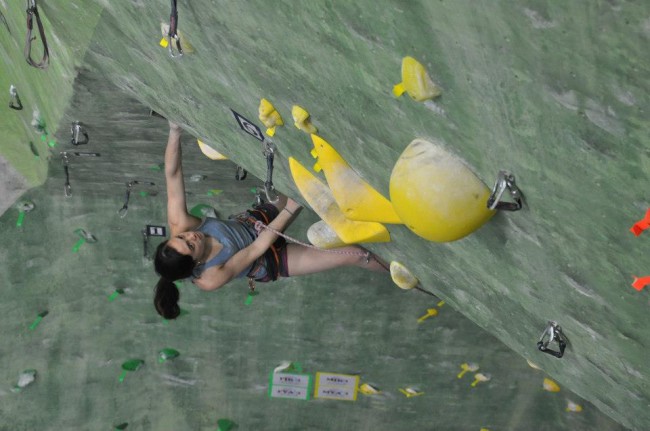
From The Forcaster
New Hampshire-based Evolution Rock & Fitness hopes to build a 13,000-plus-square-foot climbing gym in Portland that will absorb the staff and membership of the established Marginal Way Maine Rock Gym.
Evolution founder and general manager Hilary Harris on Monday said her organization is partnering with the 19-year-old Maine Rock Gym in the 65 Warren Ave. venture, which would be Evolution’s second, joining a similar facility in Concord, N.H.
The Portland Planning Board was scheduled to hold a public hearing on the project Tuesday night.
“Portland is just a fantastic market for having a climbing gym like this,” Harris said. “It’s a population that we feel is really progressive and that would support a climbing gym like this. … Maine Rock Gym is going to close down their existing facility and their membership will be moved over to Evolution.”
Maine Rock Gym is at 127 Marginal Way. The gym’s owner, Scott Howard, said Monday the current facility is 2,800 square feet with 24-foot-tall climbing walls. In addition to more than quadrupling the square footage, Howard said the new gym will offer 42-foot-tall climbing walls and space for myriad other fitness activities, such as yoga.
“The new facility is going to be a first-class facility, and we’re ready,” he said. “We need more space … We’re definitely moving up into the forefront of where the climbing industry is right now. It’s something we’ve wanted to do for a long time. It’s a tough project to put together, and that’s why the partnership with Evolution worked so well. It’s a very good team we’re putting together.”
Howard said all of Maine Rock Gym’s staff and membership will be brought into the new facility.
The new indoor rock climbing gym would be built on what is now a paved parking lot associated with the former Lifestyle Fitness gym on Warren Avenue. The Lifestyle Fitness facility is being rented by a martial arts group, according to the Evolution application, and no longer needs the more than 83,000 square feet of parking area there.
Climbing Team Breaks Guinness
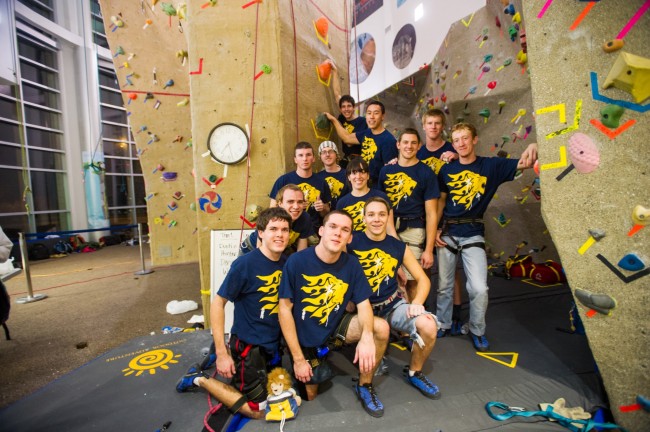
The Climbing Society of Texas A&M – Commerce recently earned some serious bragging rights. The received official notification that that had broken not one, but two Guinness World Records for indoor climbing.
On January 18th, 2013 the climbing team spent 6 hours climbing non-stop to take the record for what Guinness calls “The greatest vertical distance climbed on an artificial climbing wall in six hours“. The team climbed 12,340 m (40,485.6 ft) beating the previous record of 5,308.8 meters.
Thats not all, the team also won the Guinness Record for “The fastest time to climb the height of Everest on an indoor climbing wall by a team” with a time of 4 hr 24 min 33 sec. The previous record was 9 hours 58 minutes and 55 seconds.
The team consisted of 12 members of the Climbing Society at Texas A&M University-Commerce: Andrew Dahir, Hunter Joyce, Kathryn Cotsakis, Will Lain, Dustin Lux, Luke Raper, Deric Moore, Jake Gadberry, Rory Curtin, Dax Havrilak, Tyler King and Austing King.
During the six hours each member of the team climbed the 45 foot wall over 90 times. That’s more than 4,050 feet for each climber. The four ropes that were used to break the records had to be retired at the end of the event. The fastest single climb up the wall was just under 5.2 seconds, achieved by multiple climbers.
From Guinness,
“We are delighted to confirm that you have successfully achieved a new GUINNESS WORLD RECORDS title for Greatest vertical distance climbed on an artificial climbing wall in 6 hours (team). We would like to congratulate you on your record-breaking achievement. You are OFFICIALLY AMAZING.” – Guinness World Records
Climber Choked While Lowering
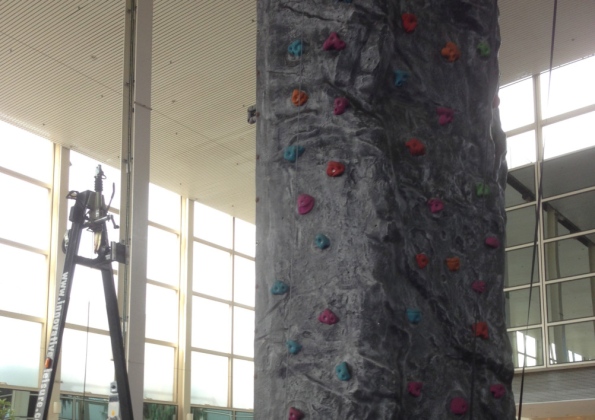
Earlier this August in Milton Keynes, England a 9-year old girl was left dangling from her helmet as she was lowered by an auto-belay system. The incident happened when the child’s helmet caught a hold as she was descending the wall, which left her choking and struggling to free herself.
The portable wall operated by Josh Maye, of Josh Maye Mountaineering, was located in Middleton Hall, a shopping facility located about an hour northwest of London. The shopping center has confirmed an investigation is ongoing, and Mr Maye’s climbing wall has been ‘shut down’ as a result.
The mother of the girl said, “I think the attendant was slow to respond. He attended to her helmet first and attempted to ‘un-free it’ but she was still choking, so I called to him to ‘lift her body up’ so she had a chance to breathe. It was all very frightening.”
Mr. Maye has apologized for what happened, saying an incident of this kind had never occurred in his business before.
He added that the girl was less than 10 feet from the floor when the incident happened and that the situation was resolved in less than a few seconds.
Mr. Maye responded, “Obviously with any activity there is an element of risk, which is what makes such events so popular. Unfortunately, on this one occasion the climber caught her helmet on one of the holds on the wall when descending and I feel that my actions were the quickest, safest and most effective at that time. Since then we have amended the Risk Assessment for the wall to now include caught helmets as this type of incident has not happened before. My staff have now been briefed on how to deal with such an event, if it were to happen again, in the most efficient way possible.”
It should be noted that even though this accident happened on a portable wall it could certainly happen on any wall involving auto-belays and helmets.
Read more at Milton Keynes Citizen
Member Contests
 Getting members into the gym during the sunny days of summer has always been a challenge for climbing gyms. But if there’s one thing that has the power to lure customers inside it’s the power of the prize.
Getting members into the gym during the sunny days of summer has always been a challenge for climbing gyms. But if there’s one thing that has the power to lure customers inside it’s the power of the prize.
A recent article from iClubs.com highlights the many ways health clubs are enticing members into their facilities. The article states:
Whether the prizes are nutrition bars, water bottles, free tanning or personal training or even a month free membership, the prizes can be relatively inexpensive and will be appreciated by members. All it takes is a little creativity and some effective marketing to entice members to take part in a contest or special promotion. These contests and incentives will encourage your members to come to the club, get results and more importantly, refer their friends and family.
Some climbing gyms are already using these tools to garner attention and create customer loyalty. One example is Pure Bouldering Gym in Colorado Springs which is offering a free punch pass for their 300th “like” on Facebook.
While we all like “likes”, they may not lead to getting people through your doors. Offering fitness-based contests is a great way to get new climbers excited about climbing and keep long-time members excited about that night’s session. One example that has been used by recreation centers and as a fund raising strategy for special events is a “climb Everest” contest. Climbers compete against each other to see who can climb the height of Everest (29,029 feet) first. Because this type of contest is not about how hard one climbs but is about how much one climbs, it’s a great way to get new climbers into the gym. If Everest is a bit too intimidating, other climbs like Half Dome (8,839 ft) and El Capitan (7,569 ft), or the total height of all the climbs in your local crag would work as well.
Another fitness-based contest many gyms have used is the “first ascent”. The contest goes like this: once a route or boulder problem has been set a prize is given to the first person to come in and “send” the route. All grades should be represented and different prizes can be awarded to male and female participants. This contest is especially good after a competition when spectators have seen many competitors trying the route, have all the beta and are excited to jump on the “Finals” routes.
Make sure to post on-going results in the gym and encourage members to post their results on social media, which will keep your members engaged and may entice new customers into the gym.
As far as prizes go, the most enticing may be cold hard cash. The Durham Climbing Centre in the UK set a special problem with a £50 ($76) bounty. They even created a video of pro-climber and routesetter Gaz Perry sending the project, giving the beta to all those interested in giving it a try. Not only does this get people psyched about going into the gym to try the route themselves, it creates a buzz in the gym as climbers and spectators eagerly wait to see who will claim the bounty.
Also remember to keep an eye on your current annual and monthly memberships. Pulse Climbing in Australia teamed up with a local gear shop last summer to offer $650 worth of climbing gear to one lucky customer that signed up for a membership in the month of June. Offering gear or technique class as a prize to customers that sign up for a membership can be a great incentive for those day-pass climbers to take the plunge into a monthly or yearly membership.
Some gyms may be reluctant to give prizes to get people into their gym — isn’t this a cheap trick that is only used by struggling businesses? In a word: no. Humans have a deep-seated desire for games and contests; according to CNN more than 50% of Americans gamble or play the lottery. The psychological power of contests has been used by businesses in every sector, including the health industry, to create excitement about their company, attract new customers and rev up their existing customer base. With these types of contests, it’s a win-win for your gym.



